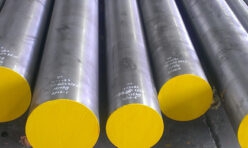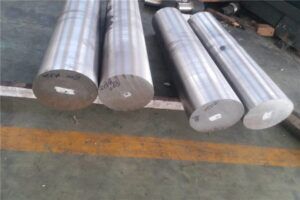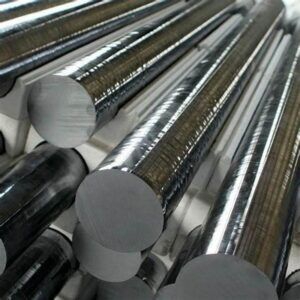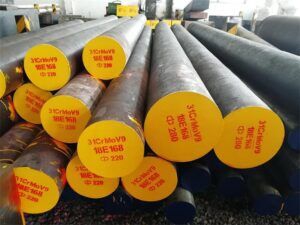SNCM439 35NCD6 38Ch2N2MA EN24 817M40 DIN 1.6582 34CrNiMo6 4340 Steel
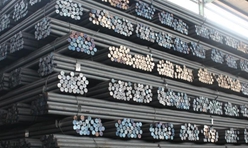
34CrNiMo6 SNCM439 35NCD6 38Ch2N2MA EN24 817M40 DIN1.6582 4340 Steel
1 34CrNiMo6 Description
34CrNiMo6 Steel is a heat treatable, low alloy steel containing nickel, chromium and molybdenum. It is known for its toughness and capability of developing high strength in the heat treated condition while retaining good fatigue strength. A very popular, versatile steel. It can be heat-treated to produce a wide range of tensile strength in moderate sections.
2 34CrNiMo6 Application
High voltage bolts and nuts, crankshafts, cam shafts, transmission axles, torsion bars, drive shafts, pump shafts, worm shafts, conveyor rollers, stems, pins, tie rods, clutch discs. Large-mass dies for hot stamping. 4340 Steel is widely used in the aerospace industry for structural parts of flaps assembly, fuselage and landing gear, propeller plane axles.
3 All Grades Comparison
| DIN | EN | BS | ASTM | GOST | ANFOR | JIS |
|---|---|---|---|---|---|---|
| 1.6582 | 34CrNiMo6 | EN24/817M40 | 4340 | 38Ch2N2MA | 35NCD6 | SNCM439 |
4 Quality Standard
EN 10277 Bright steel products. Technical delivery conditions. Steels for quenching and tempering
EN 10083 Steels for quenching and tempering. Technical delivery conditions for alloy steels
EN 10269 Steels and nickel alloys for fasteners with specified elevated and/or low temperature properties
EN 10263 Steel rod, bars and wire for cold heading and cold extrusion. Technical delivery conditions for steels for quenching and tempering
EN 10250 Open steel die forgings for general engineering purposes. Alloy special steels
ASTM A29 Standard Specification Steel Bars, Carbon and Alloy, Hot-Wrought, General Requirements
5 Chemical Composition(%)
| Steel Grade | C | Mn | Si | P | S | Cr | Ni | Mo |
|---|---|---|---|---|---|---|---|---|
| 34CrNiMo6 | 0.30-0.38 | 0.50-0.80 | 0.40 max | 0.025 max | 0.035 max | 1.30-1.70 | 1.30-1.70 | 0.15-0.30 |
| 4340 | 0.38-0.43 | 0.60-0.80 | 0.15-0.35 | 0.035 max | 0.040 max | 0.70-0.90 | 1.65-2.00 | 0.20-0.30 |
| EN24/817M40 | 0.36-0.44 | 0.45-0.70 | 0.10-0.40 | 0.035 max | 0.040 max | 1.00-1.40 | 1.30-1.70 | 0.20-0.35 |
| SNCM439 | 0.36-0.43 | 0.60-0.90 | 0.15-0.35 | 0.030 max | 0.030 max | 0.60-1.00 | 1.60-2.00 | 0.15-0.30 |
6 Mechanical Properties(T=20°C if not differently stated)
| Process | Diameter(mm) | Tensile Strength Rm (Mpa) | Yield Strength Rp0.2 (Mpa) | Elongation A5 (%) | Hardness (HB) |
|---|---|---|---|---|---|
| Quenched + Tempered + Cold Drawn | 5-10 | 1000-1200 | 770 min | 8 min | / |
| Rolled + Cold Drawn | 5-10 | / | / | / | 308 max |
| Quenched + Tempered + Cold Drawn | 10-16 | 1000-1200 | 750 min | 8 min | / |
| Rolled + Cold Drawn | 10-16 | / | / | / | 298 max |
| Rolled + Turned | 16-100 | / | / | / | 248 max |
| Quenched + Tempered + Turned | 16-40 | 1100-1300 | 900 min | 10 min | / |
| Quenched + Tempered + Cold Drawn | 16-40 | 1000-1200 | 720 min | 9 min | / |
| Cold Drawn + Quenched + Tempered | 16-40 | 1100-1300 | 900 min | 10 min | 331-380 |
| Rolled + Cold Drawn | 16-40 | / | / | / | 293 max |
| Quenched + Tempered + Turned | 40-100 | 1000-1200 | 800 min | 11 min | / |
| Quenched + Tempered + Cold Drawn | 40-100 | 1000-1200 | 650 min | 10 min | / |
| Cold Drawn + Quenched + Tempered | 40-100 | 1000-1200 | 800 min | 11 min | 298-359 |
| Rolled + Cold Drawn | 40-100 | / | / | / | 288 max |
7 34CrNiMo6 HEAT TREATMENT:
- Annealing: Heat to 800 oC – 850 oC, hold until temperature is uniform throughout the section and cool in furnace.
- Flame or Induction Hardening: 4340 steel can be further surface hardened by either the flame or induction hardening methods resulting in a case hardness in excess of Rc 50. Parts should be heated as quickly as possible to the austenitic temperature range (830 oC – 860 oC) and required case depth followed by an immediate oil or water quench, depending upon hardness required, workpiece size/shape and quenching arrangements. Following quenching to hand warm, most components should be tempered between 150 oC – 200 oC to remove quenching stresses in the case. This will have little effect on case hardness.
- Hardening: Heat to 830 oC – 860 oC, hold until temperature is uniform throughout the section, soak for 10 – 15 minutes per 25 mm section, and quench in oil, water, or polymer as required.
*Temper immediately while still hand warm.
- Nitriding: 4340 steel can also be successfully nitrided, giving a surface hardness of up to Rc 60. Nitriding is carried out at 490 oC – 530 oC, followed by slow cooling (no quench) reducing the problem of distortion. Parts can therefore be machined to near final size, leaving a grinding allowance only. The tensile strength of the core is usually not affected since the nitriding temperature range is generally below the original tempering temperature employed. N.B. Nickel is inert to the action of nitrogen and in general resists its diffusion into steel. This can result in lower case hardness or longer nitriding cycle times for steels containing nickel such as 4340 steel.
- Stress Relieving: Heat to 600 oC – 650 oC, hold until temperature is uniform throughout the section, soak for 1 hour per 25 mm of section, and cool in still air.
- Tempering: Re-heat to 450 oC – 660 oC as required, hold until temperature is uniform throughout the section, soak for 1 hour per 25 mm of section, and cool in still air. N.B. Tempering should be avoided if possible within the range 250 oC – 450 oC due to temper brittleness.
- Notes on Heat Treatment: Heating temperatures, rate of heating, cooling and soaking times will vary due to factors such as work piece size/shape also furnace type employed, quenching medium and work piece transfer facilities etc.
8 MACHINABILITY:
4340 steel in the hardened and tempered as supplied condition is still regarded as being readily machinable and operations such as turning and drilling etc. can be carried out satisfactorily using machine manufacturers, recommendations for suitable tool type – feeds and speeds.
9 Welding
Welding of 4340 steel in the hardened and tempered condition (as normally supplied), is not recommended and should be avoided if at all possible, as the mechanical properties will be altered within the weld heat affected zone. It is preferred that welding be carried out on 4340 steel while in the annealed condition, and that the work piece, immediately on cooling to hand warm, is then stress relieved at 640 oC – 660 oC prior to hardening and tempering.
If welding in the hardened and tempered condition is really necessary, then the work piece, immediately on cooling to hand warm, should be if possible stress relieved at 15 oC below the original tempering temperature (if known).
10 Mill′s test certificate:
EN 10204/3.1 with all relevant data reg. chem. composition, mech. properties and results of testing.

